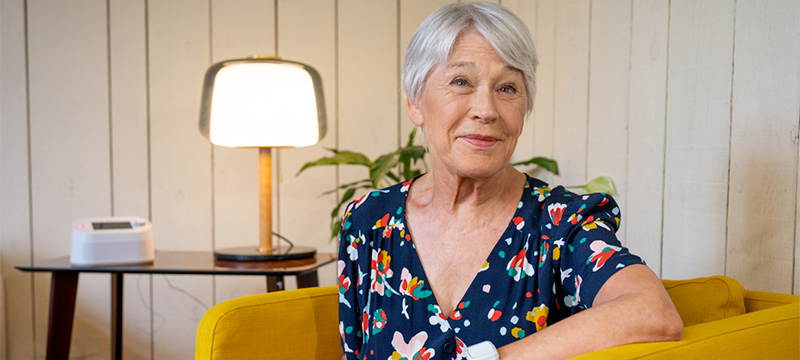Berg Insight has found in its latest research that around 9.0 million people in Europe and 5.2 million people in North America were using telecare or medical alert solutions at the end of 2023.
The figures include users of both in-home and mobile systems. Until 2028, Berg Insight forecasts that the number of telecare users will grow at a compound annual growth rate (CAGR) of 7.8 percent to reach 20.6 million in the two regions.
The market value of telecare solutions in Europe reached at the same time € 3.5 billion in 2023. The market value is expected to grow at a CAGR of 8.4 percent in the next five years to reach € 5.2 billion at the end of the forecast period. The market value for medical alert solutions in North America is expected to grow from € 2.7 billion (US$ 2.9 billion) in 2023 to € 4.1 million (US$ 4.5 billion) in 2028.
Berg Insight’s definition of telecare solutions, also known as medical alert systems or PERS (personal emergency response systems), is a service aimed for elderly, disabled and vulnerable people to seek help from home in case of an emergency. These solutions can trigger an alarm when the user presses a button or when a passive sensor detects an event out of the ordinary. These systems provide continuous in-home or completely mobile monitoring services and can consist of a range of electronic devices such as personal alarm buttons, motion detection sensors, GPS monitors or fitness devices. The market evolves to include AI solutions that automatically trigger an alarm for instance when a user leaves home at an unexpected time or forgets to take his or her medicine.
The telecare market in Europe and North America is served by range of companies providing hardware devices, software platforms and monitoring services. In the European market, Tunstall, Legrand, TeleAlarm, Careium, Chiptech and Chubb are among the leading end-to-end solution providers. Tunstall, Legrand and TeleAlarm have strong presence across the European region. Chiptech has its operations in the UK market, meanwhile Careium is a leading market player in the Nordic region and has also presence in the UK. Companies such as Telecom Design, Essence Group, 9Solutions, Oysta Technology (Access Group), Everon and Ascom are key telecare equipment vendors in Europe. Essence SmartCare is well-established in both Europe and North America. Enovation, Skyresponse and Azur Soft are the leading providers of telecare monitoring software solutions. Additional significant vendors active in Europe are Tellu, Yorbl, Urmet, Navigil, SmartLife Care, Libify, SmartWatcher, Just Checking and Vivago. In North America, end-to-end telecare solutions are provided by Freeus (Becklar Group), Connect America, Mytrex, Numera (Nice North America), MobileHelp and Lively. Another group of companies offering monitoring services and reselling medical alert equipment are Medical Guardian, Life Alert Emergency Response, ADT, Bay Alarm Medical, Aloe Care and ModivCare. Major telecare equipment vendors are Essence Group, Climax Technology, LogicMark and Anelto.
“The market for personal emergency response systems for the elderly and the vulnerable population will continue to grow as the demand for digital care solutions has increased over the last couple of years”, says Vatsala Raina, IoT analyst at Berg Insight.
The European and North American market for personal emergency response systems is supported by several trends and developments that will have an impact on the competitive landscape during the forecast years. The silver generation is quickly becoming technologically savvy and open to adopt technology to help in everyday living needs. AI has an increasing role in the development of preventive and predictive care models. Solution providers have integrated AI and ML algorithms to analyse the monitoring data to learn about the patients’ daily routines, identify irregularities and expedite the needed assistance. Predictive analytics models assess the users’ risk of falling based on their historical data and health conditions.
Mrs. Raina concluded:
“The industry is moving towards incorporating new care models and technologies such as sensor-based systems, smart lamps to detect fall detection, and consumer-oriented technology companies incorporating PERS features in wearables, smart speakers and smartphones.”
The industry is becoming more patient-centric which calls for integrated systems and improved interoperability of connected care solutions.
The post The number of telecare solution users in Europe and North America reached 14.2 million at the end of 2023 appeared first on IoT Business News.






























